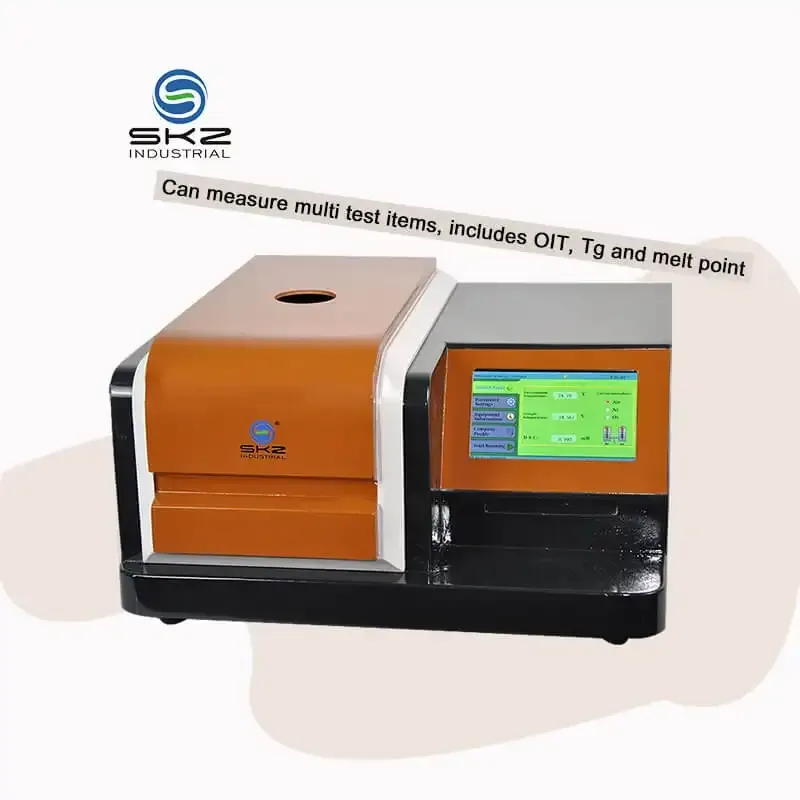Definitions: Heat Flux vs. Power Compensation DSC
Differential Scanning Calorimetry (DSC) is a crucial thermal analytical technique that includes two primary methods: heat flux DSC and power compensation DSC. In heat flux DSC, energy is measured based on the heat flow between a sample and a reference material when subjected to controlled temperature changes. This method is renowned for its simplicity and high sensitivity, making it ideal for examining endothermic and exothermic processes. Conversely, power compensation DSC measures the power necessary to sustain the temperature difference between the sample and the reference. This approach offers greater precision in quantifying energy changes, particularly useful in situations demanding stringent measurement accuracy.
However, both methods have their pros and cons. Heat flux DSC is straightforward and generally less expensive, but it may offer lower accuracy compared to power compensation DSC, which provides more precise readings but requires more complex instrumentation and can be costly. These principles are essential in several industries, including pharmaceuticals and polymers, where understanding material behavior under varying thermal conditions is vital. Studies regularly demonstrate DSC's importance, particularly in ensuring product stability in drugs and consistency in polymer properties (Understanding DSC Testing: Principles and Applications).
Fundamental Measurement Methods by JIS Standards
The Japanese Industrial Standards (JIS) serve a critical role in standardizing DSC methodologies, ensuring consistency and accuracy in thermal analysis across labs worldwide. These standards outline the procedures for conducting DSC testing, detailing everything from sample preparation to the execution of the tests. One key standard is JIS K7068, which defines specific methodologies for differential scanning calorimetry, emphasizing the importance of reproducibility and reliability.
Implementing these standards is essential in sectors such as materials science and engineering, ensuring that experiments conducted in different laboratories yield consistent results. For instance, in the polymer industry, consistent application of JIS standards ensures that product testing outcomes are comparable, facilitating better quality control and product development. According to several industry experts, adherence to these standards greatly enhances the reliability of DSC results, as referenced in various authoritative publications like the Journal of Polymer Testing.
Key Components: Sensors, Crucibles, and Thermal Pathways
DSC instruments are composed of several key elements, with sensors playing a pivotal role. Typically, thermocouples are employed to measure precise temperature variations, which is fundamental in discerning subtle thermal events. Moreover, the design and material composition of crucibles significantly impact thermal measurement accuracy. Crucibles, often made from materials with high thermal conductivity and chemical resistance like platinum, influence how heat is transferred to the sample under study.
The thermal pathway, essentially the route through which heat travels during analysis, is another crucial component. Efficient thermal pathways enhance the accuracy of heat transfer readings, which is critical in applications requiring detailed thermal profiling, such as the testing of high-performance polymers and phase change materials. A well-designed DSC setup, with optimal combinations of sensors, crucibles, and thermal pathways, ensures that the instrument can accurately capture the intricacies of thermal behavior, contributing to more reliable and insightful data on a sample's thermal properties.
Temperature Control Systems and Gas Atmosphere Management
Precise temperature control systems play a crucial role in Differential Scanning Calorimetry (DSC) by ensuring stability during analysis. These systems incorporate feedback mechanisms that help maintain the required temperature settings throughout the testing process. Additionally, gas atmosphere management—choosing between inert and reactive gases—can significantly influence sample analysis. This is particularly important in applications such as oxidation studies, where the type of gas affects the chemical reactions observed. A study published in the Journal of Thermogravimetry has shown that temperature variations can drastically alter thermal measurement outcomes, underscoring the importance of carefully managed temperature and gas settings.
Detecting Phase Transitions: Endothermic vs. Exothermic Events
DSC is instrumental in detecting phase transitions, differentiating between endothermic and exothermic events. Endothermic transitions involve absorption of heat, typical in processes like melting and glass transitions. Conversely, exothermic transitions release heat, as seen in crystallization or polymer curing. DSC uses graphical data representation to differentiate these events, showing distinct peaks for each type on the thermal graph. In materials science and pharmaceutical research, these phenomena are crucial, with numerous studies validating their effectiveness in understanding material behavior under varying thermal conditions.
Data Interpretation: Melting Points and Glass Transition Analysis
Interpreting DSC data is pivotal for identifying melting points and glass transition temperatures (Tg) of various materials. The graphical representation of temperature readings in DSC provides critical insights into these properties, essential for material characterization. For instance, glass transition analysis helps determine the thermal stability and flexibility of polymers, informing their application in industries like ceramics and pharmaceuticals. Data sources such as the Journal of Materials Research highlight common melting points and Tg values, offering a benchmark for interpreting and applying DSC data effectively.
Industrial & Scientific Applications of DSC
Polymer Characterization: Curing and Crystallization Studies
Differential Scanning Calorimetry (DSC) plays a critical role in polymer characterization, specifically in assessing thermal properties during curing and crystallization processes. These thermal properties directly influence the quality and performance of polymer materials. The process of curing, for example, is a key parameter that affects the cross-linking how polymer molecules join, impacting the final material's mechanical properties and durability. By analyzing the exothermic peaks that appear on a DSC curve during these processes, we gain insights into the timing and extent of these reactions (Journal of Polymer Science).
Similarly, the crystallization behavior of polymers can be meticulously studied using DSC to determine the level of crystallinity within the material. This is significant because the degree of crystallinity affects the polymer's thermal stability, transparency, and mechanical properties. For example, a highly crystalline polymer exhibits increased rigidity and heat resistance. Current research, such as that published in Macromolecules, highlights the importance of DSC in setting industry standards, particularly in the context of ensuring that polymers meet precise performance criteria for specific applications like automotive parts and consumer electronics.
Pharmaceutical Purity Testing and Polymorphism Detection
In the pharmaceutical industry, ensuring the purity of drug compounds and detecting polymorphic forms are paramount. DSC is instrumental in these processes, allowing us to determine the purity of a substance through the analysis of its melting behavior. A purer compound exhibits a sharp, well-defined melting peak. This ability to detect polymorphic forms is particularly valuable as polymorphs can exhibit different solubility and stability profiles, potentially altering a drug's efficacy and shelf-life.
The procedures for DSC analysis in pharmaceuticals often include heating the compound and observing the thermal transitions correlating to purity and polymorphism. For quality control, it’s crucial as it helps identify inconsistencies in batches that could affect the drug's performance. According to data from the International Journal of Pharmaceutics, DSC has shown remarkable effectiveness in the quality testing of pharmaceutical products, achieving a high level of accuracy in detecting subtle polymorphic changes that other techniques might miss. Statistics from the industry advocate for DSC's effectiveness in maintaining high standards of pharmaceutical integrity.
Food Science: Water Dynamics and Thermal Stability Profiling
DSC is pivotal in food science, particularly in analyzing water content and its interactions within food matrices. By employing DSC, food scientists can evaluate how water contributes to the structural and thermal properties of food products. For instance, moisture levels can affect the texture, shelf-life, and nutritional quality. DSC helps in mapping water dynamics, providing insights that are essential for optimizing food processing and storage conditions.
Thermal stability studies conducted via DSC in food science have profound implications, particularly concerning food processing and storage efficiencies. By understanding how food items respond to heat, manufacturers can improve their processing techniques to retain nutritional value and enhance safety. Studies published in the Journal of Food Engineering underscore significant findings, such as identifying optimal processing temperatures and enhancing quality assurance protocols. DSC continues to be a valuable tool for ensuring that food products maintain their intended quality and safety standards.

